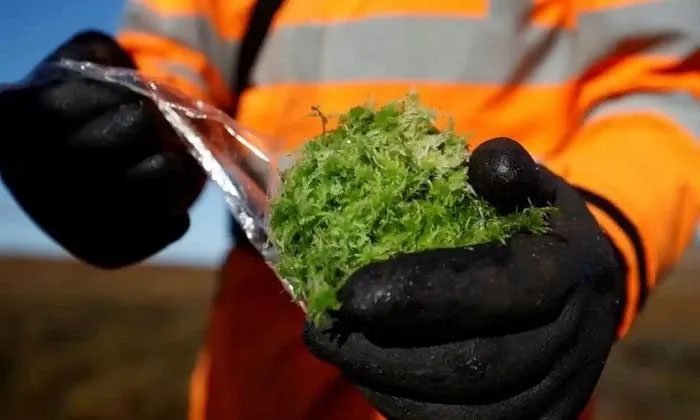According to research conducted at Peak District National Park in England, sphagnum moss can help prevent flooding by slowing down the flow of rainwater downstream.
Researchers have discovered a special type of moss that can significantly reduce the risk and severity of floods for communities living in low-lying areas.

Sphagnum moss can reduce the maximum amount of water flowing into rivers after a storm. (Photo: Phil Noble / Reuters).
Scientists from the Moors for the Future Partnership have conducted a six-year study on sphagnum moss. The results show that planting this type of moss in upland areas can significantly slow down the flow of water from hillsides, preventing river basins from overflowing due to water pooling downstream.
Specifically, sphagnum moss reduces peak flow rates by 65% – the maximum amount of water flowing into rivers after a storm. At the same time, sphagnum moss increases the delay by 680% – the time between rainfall and rainwater entering the river system.
Over 50,000 sphagnum moss plants have been planted on Kinder Scout, the highest point in Peak District National Park, for researchers to observe. This is part of an “outdoor laboratory.”
Before planting moss on Kinder, the hillside surface was bare peat, meaning that after a storm, rainwater would flow directly down, making communities in the lower valleys vulnerable to flooding.
Planting sphagnum moss can provide significant ecological benefits. This type of moss can absorb water up to 20 times its weight. As a result, sphagnum moss can retain more rainwater upstream and enter river basins more slowly, preventing rivers from overflowing.
Additionally, sphagnum moss can help protect the underlying peat layers while accumulating over time to create new peat layers that are essential for carbon storage.
Researchers state that the benefits of planting sphagnum moss will be enhanced over time as the plants grow. The cultivation of moss has the potential to provide global benefits regarding climate, water quality, and reducing the severity of flooding.
Tom Spencer, a research officer at Moors for the Future Partnership, noted that planting sphagnum moss could be “an effective tool in mitigating the risks and severity of flooding,” providing “widespread benefits for communities in lower-lying areas.”


















































